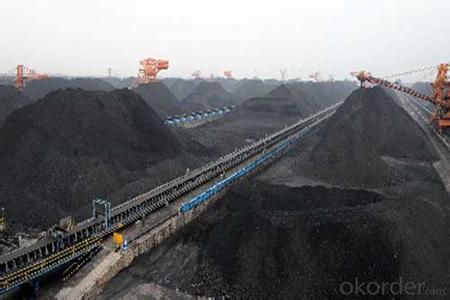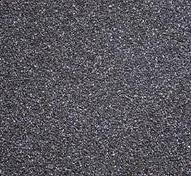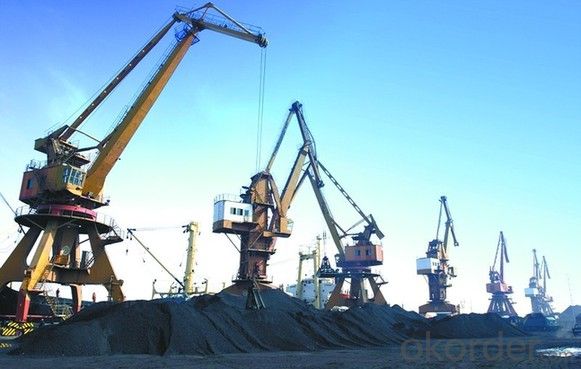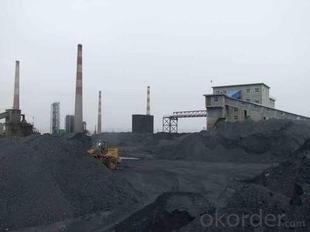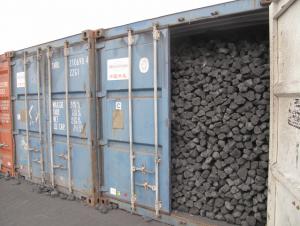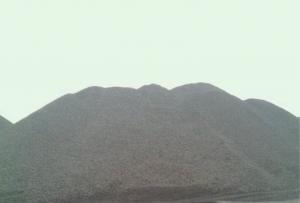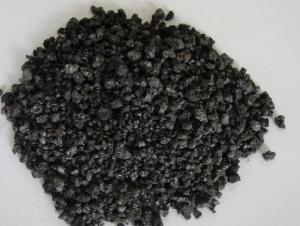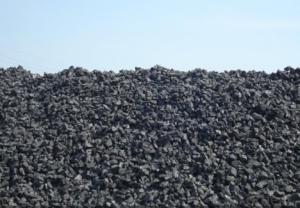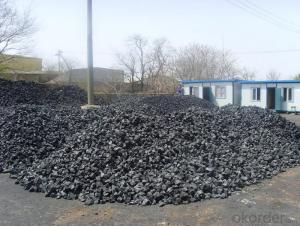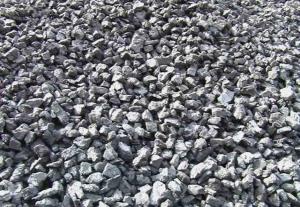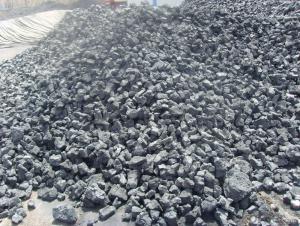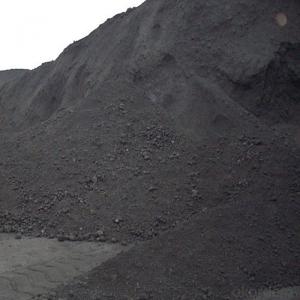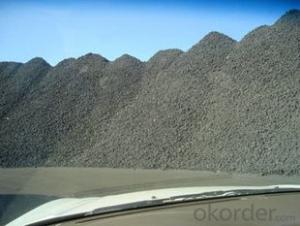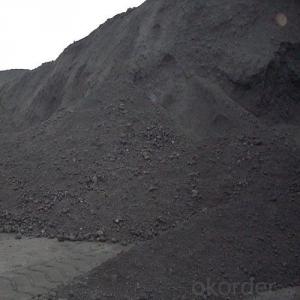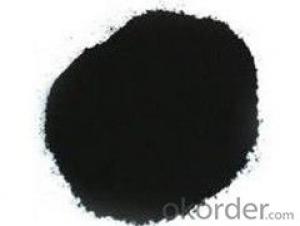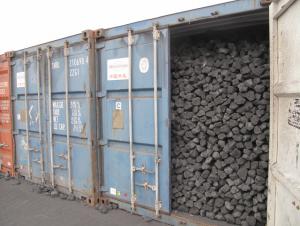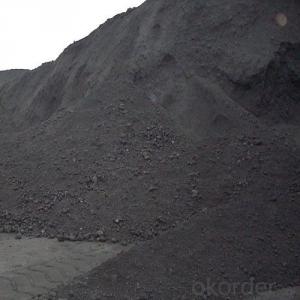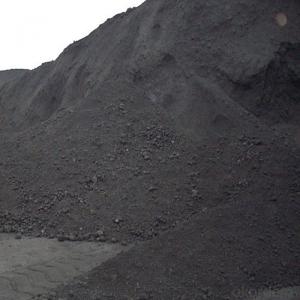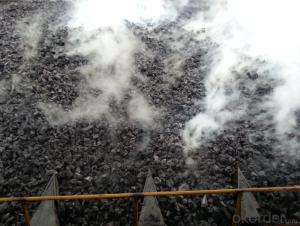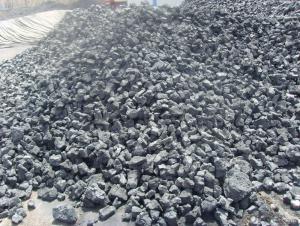Coke Breeze of the Size is 3 to 6 mm
- Loading Port:
- Tianjin
- Payment Terms:
- TT OR LC
- Min Order Qty:
- 100 m.t.
- Supply Capability:
- 3000 m.t./month
OKorder Service Pledge
OKorder Financial Service
You Might Also Like
1. Structure of Metallurgical Coke of Coke Strength after Reactivity 65 Description:
Coke is a hard texture, with carbon as the main component of irregular porous body, with cracks and defects in silver. The true density is 1.8 ~ 1.95 g/cm3, bulk density is 400 ~ 500 kg/m3, the porosity of 35% ~ 35%,.Coke all vertical and horizontal crack can be seen with the naked eye observation. The vertical and horizontal crack along the thick break, still is focal piece containing micro cracks.
To ensure the quality of coke, the choice is the most basic requirements of coking coal volatile matter, caking and coking properties; the vast majority of coking coal must go through washing, as much as possible to ensure low ash content, sulfur content and phosphorus content. When choosing a coking coal, but also must pay attention to the inflation pressure in the process of coal in coking. With low volatile coal coking, due to its colloid viscosity big, prone to high inflation pressure, harms the coke oven masonry, needs to be addressed by coal blending coking.
2. Main Features of the Metallurgical Coke of Coke Strength after Reactivity 65:
• Quality assurance
• Mutual benefit
• Preferential price
• Various choice
3. Metallurgical Coke of Coke Strength after Reactivity 65 Images:
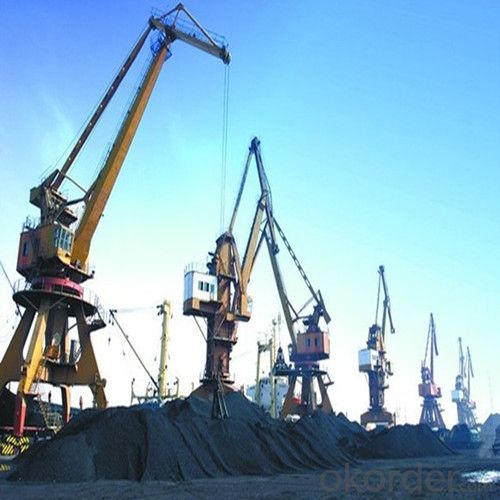

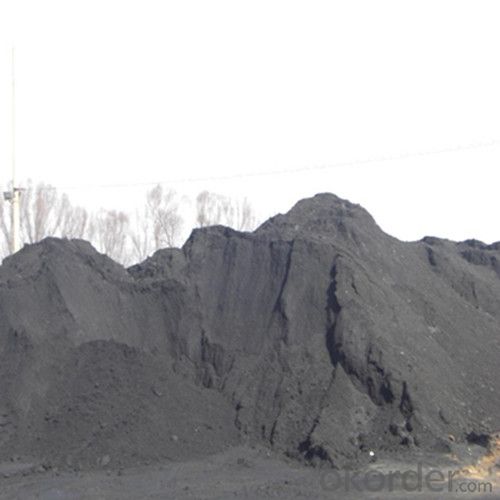
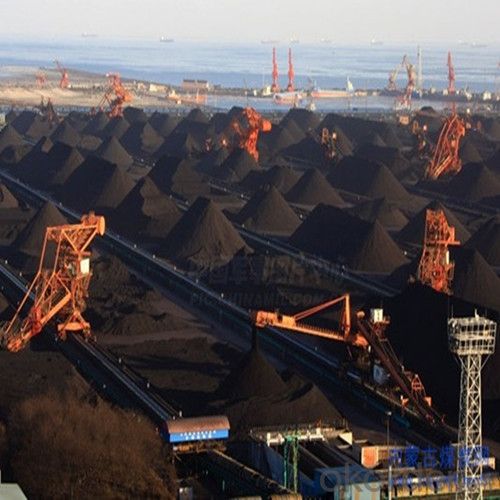
4. Metallurgical Coke of Coke Strength after Reactivity 65 Specification:
Parameters | Ash(DB) | Moisture (ARB) | Volatile Matter (DB) | Fix Carbon (DB) | Size 3-6mm | +6mm | -3mm |
Guarantee | 12.5%max | 15%max | 1.5%max | 83%min | 90%min | 5%max | 5%max |
5. FAQ
We have organized several common questions for our clients,may help you sincerely:
1) Main type
Metallurgical coke is blast furnace coke, coke, iron alloy and nonferrous metal smelting with coke. As more than 90% of the metallurgical coke for blast furnace ironmaking, so often called the blast furnace coke metallurgical coke.
Foundry coke is dedicated to cupola molten iron. Coke is the main fuel of cupola molten iron. Its role is hot metal melting furnace charge and overheating, support stock column maintain its good air permeability. As a result, coke blocks should have large, low reactivity, low porosity, with sufficient impact crushing strength, ash content and low sulfur content.
2) Application of coke
• Used for blast furnace ironmaking and used for copper, lead, zinc, titanium, antimony, mercury
• Other non-ferrous metal smelting of blast furnace,
• Reducing agent, compound
• The function of stock column frame.
3) The history of coke
Our country's metallurgical industry has a long history, is the original fuel charcoal smelting industry, due to the charcoal burning temperature is lower, and short duration of fire and not easy to master hour, therefore, directly affect the level of smelting, to make the steel quality is not guaranteed. Later, people use coal as smelting, coal combustion temperature is higher, and the combustion duration is longer than charcoal, but easily broken after coal is heated in the oven, affect the burden of permeability, and high content of sulfur in coal, directly affect the quality of the cast iron. After a period of practice, it has been found that the coal after dry distillation (i.e., separated flame heating), volatile components may be removed, and the porosity increased, resembling charcoal, fire is better than that of coal, but also can avoid charcoal and coal. This after carbonization of coal is coke.
Currently found in the earliest coke in our country, is in Guangdong new will be a unearthed in the ancient ruins in the late 13th century, during the southern song dynasty period in our country. Thus concluded that China's song dynasty, have been used to coke ironmaking. Guangdong new will find coke is also found that the earliest in the world. In Europe, the UK in 1788 began with coke ironmaking, this is the earliest record of western countries, the more than 500 years later than our country.
Although the use of coke earliest in our country, but has not seen through the records. Coking and the earliest recorded with coke can be found in the late Ming dynasty in China side to write the physical knowledge, he pointed out that coal everywhere all have, "smelly burning-out and closed into stone, chisel and charging again yue reef (coke), May 5, fire, cook Fried mine stone, will save Labour". This smelly coal, it is to point to contain volatiles more coking coal, the coal sealed burning-out, becomes hard coke, used for smelting, the effect is very good.
Parameters | Ash(DB) | Moisture (ARB)
| Volatile Matter (DB) | Fix Carbon (DB) | Size 3-6mm
|
+6mm |
-3mm |
Guarantee | 12.5%max | 15%max | 1.5%max | 83%min | 90%min | 5%max | 5%max |
At present, the main customers are NOBLE GROUP, IMR and so on. Our main overseasmarkets are Japan, India, Brazil, Iran, Vietnam, and so on.
Should any of these items be of interest to you, please let us know. We will behappy to give you a quotation upon receipt of your detailed requirements.
- Q: Standard grade two grade coke standard
- Quality index of cokeCoke is a solid product of high temperature carbonization, the main component is carbon, is a crack and irregular pore structure (or porous). The number of cracks has a direct impact on the strength and crushing strength of the coke, the index is generally measured in terms of crack degree (the number of cracks in the unit volume coke). The index of pore structure is mainly expressed by the porosity rate (the percentage of the total volume of coke), which affects the reactivity and strength of coke. Different uses of different coke porosity index requirements, the general requirements of metallurgical coke porosity in the 40 ~ 45%, 35 ~ 40% in coke, coke export demand in about 30%. Coke crack degree and the porosity level, and the coking coal has a direct relationship, such as coal based coke refining, crack, high porosity, low strength; with coal as the foundation of the coal refining coke crack less, low porosity and high strength. The strength of coke is usually represented by two indices of crushing strength and abrasion resistance. Coke crushing strength refers to coke can resist foreign impact force without ability along cracks or defects at the broken, represented by the M40 value; wear strength of coke coke refers to the ability to resist external friction without surface of glass forming debris or powder, said M10. The cracking degree of coke affects the M40 value of its breaking strength, and the pore structure of coke affects the M10 value. There are many methods for determination of M40 and M10 value method, commonly used in our country the German migon drum test.
- Q: What is the reasonable ratio of coal to coke
- Coal is mainly composed of carbon, hydrogen, oxygen, nitrogen, sulfur and phosphorus, and carbon, hydrogen, oxygen and three of the total possession of more than 95% of the quality of the machine, is a very important energy, metallurgy, chemical industry is an important raw material
- Q: Ca3 (PO4) 2, SiO2, coke and other raw materials for the production of silica gel (SiO2? NH2O), phosphorus, phosphoric acid and CH3OH, the following process raw materials comprehensive utilizationCa3 (PO4) 2, SiO2, coke and other raw materials for the production of silica gel (SiO2? NH2O (P), phosphorus, phosphoric acid and CH3OH, the following process raw materials comprehensive utilization rate is high, less waste(1) in the reaction, which belongs to the replacement reaction is ______[optional: (I), (II) and (III), (IV), (V).(2) chemical reaction equation II under high temperature of ______; solid waste can be used for ______. CaSiO3(3) reaction to be carried out in isolation and oxygen under anhydrous conditions, the reason is ______.(4) CH3OH can be used as a fuel cell fuel in strong acid medium, the electrode reaction type anode for ______.(5) pointed out that the significance of ______. (VI) in this part of the industrial production(6) written by P H3PO4, the reaction of the ______ ______.
- (1) according to the definition of replacement reaction, there are two kinds of compounds in the reaction of II, contains two kinds of compounds in the product, so it is not the replacement reaction of reactants, IV no elemental, so it is not a replacement reaction, V reaction is a chemical reaction, I and III reaction with replacement reaction conditions, so is the replacement reaction,
- Q: What is the difference between coking coal and coke
- Therefore, coke is not coking coal, coking coal is one of the products after processing
- Q: Some experimental results summarized the following two facts: the coke can not be used to restore aluminum mine, but it can be used for the reduction of copper and iron; no containing copper sulfate solution with tin, thus the activity sequence C, Al, Cu, Fe of the four elements is ______.
- K, Ca, Na, C, Mg, Al is not able to use C, CO, H2 and so on to restore the preparation of metal, because these metals are very active, can be used to restore copper and iron ore, indicating that the reduction of strong;
- Q: What is the phosphorus content in coke
- After drying, pyrolysis, melting, bonding, curing, shrinkage and other stages of the final coke, this process is called high temperature coking (high temperature carbonization)
- Q: Do not understand why some of the indicators of coke is the cause of the full analysis of phosphorus or foundry use of this time?It is best to use the foundry requirements? Thank you
- As everyone knows, sulfur and phosphorus is harmful substances in the metal, because the sulfur is out in coke processing, so this index is not required, but the phosphorus in this process has not been effectively removed, so this is the requirement of foundry process or smelting plant. Phosphorus can reduce the strength of the metal, will lead to the metal "cold crisp", so to control the phosphorus content of coke, to prevent phosphorus into the metal.
- Q: What is the difference between coke and semi coke in ferrosilicon smelting process? In the process of energy statistics in the end should be 0.9714 of the conversion coefficient should be used with the conversion coefficient of 0.75 x 0.9714, please expert advice? emergencyUrgent!
- The difference between them is that the final temperature of the two, the use of different raw materials, product yield and product properties are not the same. Low temperature coke. Under the condition that the coal is isolated from the air, the product is heated to 500 to 600 DEG C to obtain the product. It uses the raw coal is lignite, metamorphic degree of coal, long flame coal and gas coal. The final purpose of the low temperature carbonization is to obtain high yield coal tar
- Q: Coke in the whole process of steelmaking in the end is what to do, just to provide heat or carbon and other substances into steel or iron?In the study of coal classification inside, one is divided into coking coal, coking coal and coke as main, and then you see is steel or iron coke must material. What is not clear. In the end, out of coal mining is mainly used to burn energy extraction, or said that coal like oil can be converted into other products, which is a coke can convert?
- 3) skeleton: smelting process in blast furnace is gas rise and decline occurred in the opposite charge of movement and interaction, the core permeability is the key operation of blast furnace. In the upper column, gas flow distribution of coke layer; in the middle of the column material, the coke from the skeleton effect, support has been melting the iron ore, the normal gas rise; in the lower column, high temperature in the solid massive existing coke and has become liquid hot metal and slag mixed together, become loose skeleton gas rising and falling iron and slag.
- Q: What are the quality indicators of coke
- Different uses of different coke porosity index requirements, the general requirements of metallurgical coke porosity in the 40 ~ 45%, 35 ~ 40% in coke, coke export demand in about 30%. Coke crack degree and the porosity level, and the coking coal has a direct relationship, such as coal based coke refining, crack, high porosity, low strength; with coal as the foundation of the coal refining coke crack less, low porosity and high strength. The strength of coke is usually represented by two indices of crushing strength and abrasion resistance. Coke crushing strength refers to coke can resist foreign impact force without ability along cracks or defects at the broken, represented by the M40 value; wear strength of coke coke refers to the ability to resist external friction without surface of glass forming debris or powder, said M10. The cracking degree of coke affects the M40 value of its breaking strength, and the pore structure of coke affects the M10 value. There are many methods for determination of M40 and M10 value method, commonly used in our country the German migon drum test. Evaluation of the quality of coke, 1 of sulfur in coke: sulfur is a harmful impurity of iron smelting, which reduce the quality of pig iron. The sulfur content in the pig iron is more than 0.07%. 11% of the sulfur from the blast furnace charge into the furnace comes from the ore, and the other comes from the limestone; the other is from the coke, so the coke is the main source of sulfur in the charge of the 82.5% of the charge. Sulfur content in coke directly affects the production of blast furnace. When the sulfur content in coke is greater than 1.6%, sulfur increased 0.1%, the amount of coke increased 1.8%, limestone amount increased 3.7%, 0.3% increase in amount of ore blast furnace output to reduce the sulfur content under 1.5 - 2.0%. metallurgical coke is not greater than 1%, the use of large and medium-sized metallurgical coke content in blast furnace is less than 0.4 - 0.7%
Send your message to us
Coke Breeze of the Size is 3 to 6 mm
- Loading Port:
- Tianjin
- Payment Terms:
- TT OR LC
- Min Order Qty:
- 100 m.t.
- Supply Capability:
- 3000 m.t./month
OKorder Service Pledge
OKorder Financial Service
Similar products
Hot products
Hot Searches
Related keywords




